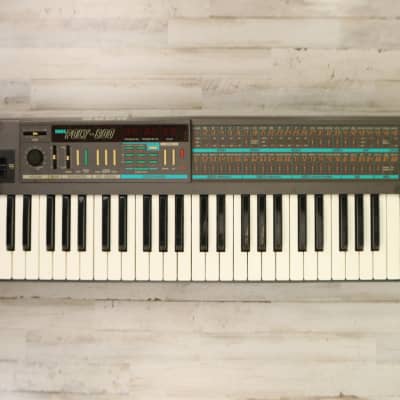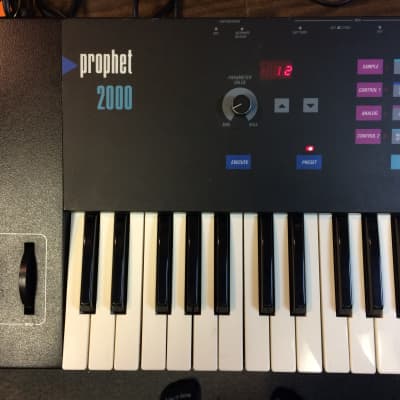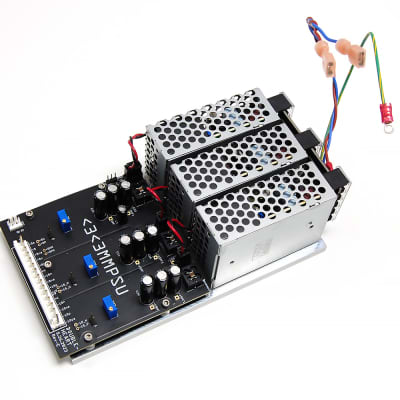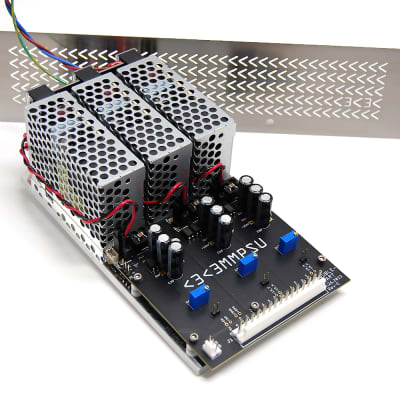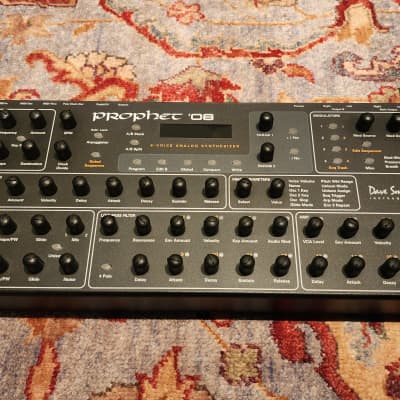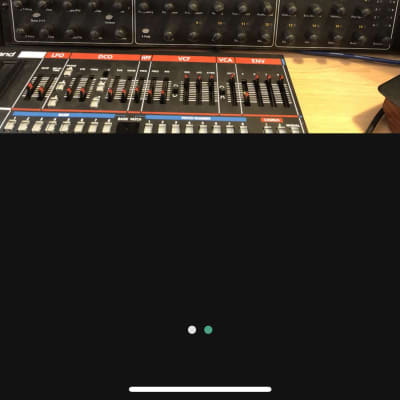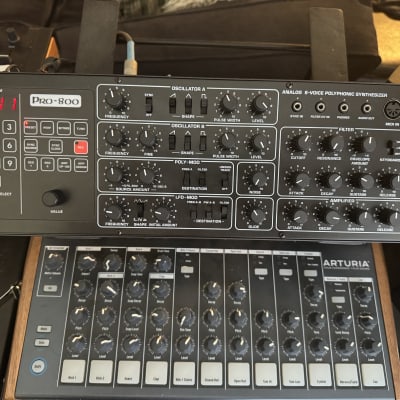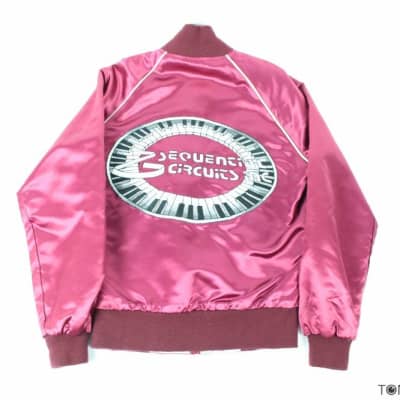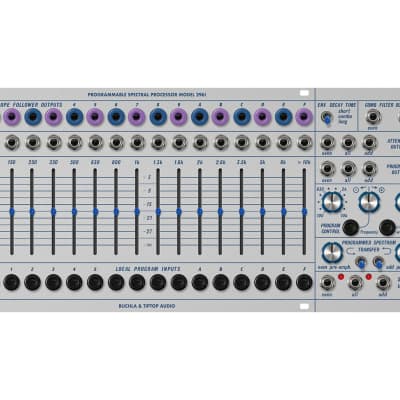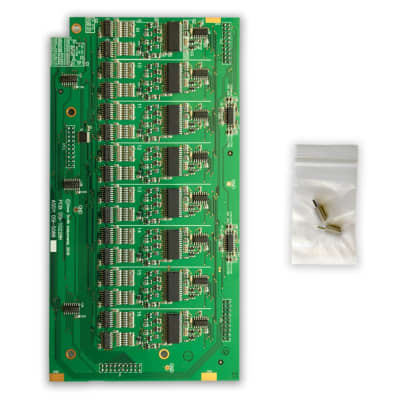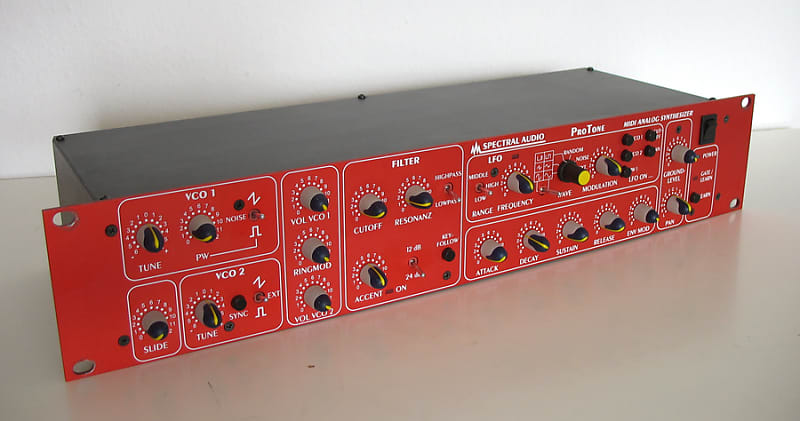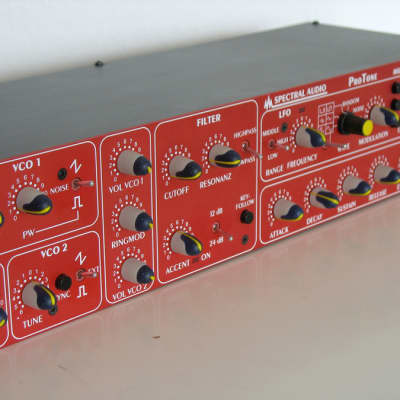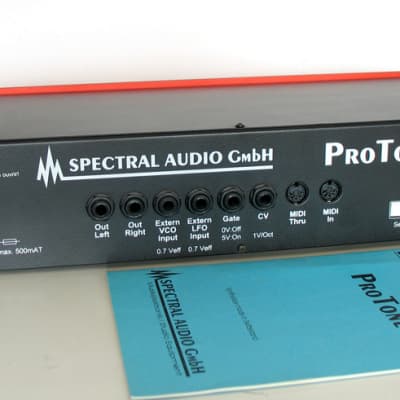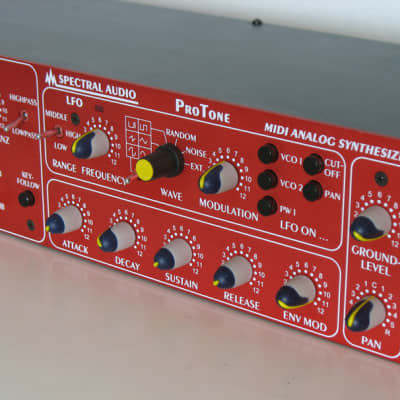Spectral Audio ProTone Analog Synthesizer. It is monophonic and features two analog oscillators, a beefy resonant filter, flexible LFO, MIDI and CV/Gate control, and a simple intuitive hands-on layout with every control parameter accessible from the front panel knobs and switches.
This is a very hard to find synth from mid 90', under 500 exist in the whole world !
This unit works fine ( Europe 220V/50 Hz) and is in a perfect shape.
Pics on request
From Spectral Audio:
The ProTone is a monophonic Analog Synthesizer with an internal MIDI Interface. Because of the full analog design, the ProTone is perfect for creating powerful, special and never before heard sounds. And with its deep red front panel, it will look great in your rack.
The basic principle of the ProTone corresponds to the tried and tested analog synthesizer principle with VCO, VCF, VCA, envelope generator and LFO. This principle is called subtractive synthesis. In order that the ProTone is suitable for MIDI, an additional MIDI to CV converter is necessary which
converts the MIDI signals into analog signals with which the VCOs, the filter, as well as the envelope generator are controlled.
The raw material for the sound is offered by the VCOs (Voltage Controlled Oscillator) in the form of a sawtooth or rectangular signal as well as the noise generator (for effects such as wind and thunder sounds). The width of the rectangular signal from VCO1 can be changed with the PW regulator. The narrower the rectangular signal (regulator turned to the right), the 'sharper' the sound. VCO2 is synchronised from VCO1 with the SYNC switch The tone will be interesting in this case when the TUNE regulator (5) of VCO2 is turned (or by modulating with the LFO VCO 2), which results in a typical "Sync Sound".
By means of the external VCO input, other sounds can also serve as raw material. The ring modulator multiplies the signals of the two VCOs which markedly amplifies the beat (frequency difference). Note: When the SYNC switch (6) is switched on, no beats are developed and the ring modulator has therefore no effect.
The SLIDE regulator determines the time balance from one note to another and is valid for both VCOs.
Afterwards, the signal flows through the voltage controlled filter (VCF=Voltage Controlled Filter), within which certain frequency ranges are suppressed. The lowpass filter allows low frequencies to pass and suppresses the high ones, the highpass filter lets high frequencies through and suppresses the low ones. The frequency from which the signals are suppressed is called the limit or cut-off frequency. With the
ProTone, this is formed from various sources:
1. CUTOFF frequency regulator
2. ENV MOD regulator (influence of the envelope on the cut-off frequency)
3. LFO
4. ACCENT regulator
5. KEYFOLLOW switch
With the KEYFOLLOW switch the cut-off frequency increases on higher notes so that audible freqency bands always remain the same. The resonance forms a feedback of the output to the input of the filter and causes an amplification of the frequencies around the cut-off frequency.
The ACCENT regulator sets the share of the second envelope and affects the cut-off frequency as well as the volume. It is only active when the ACCENT indicator lights, ie, when the accent function is switched on via the MIDI controller 65. The accent function is always active when the unit is switched on. By means of the MIDI controller 65, it is now possible, as with the TB 303, to give individual notes an accent (value 127) or to take an accent away (value 0). For this purpose, the corresponding control value must be sent in the sequencer, timed either before or with the note.
Before the signal leaves the ProTone, it arrives at the VCA (Voltage Controlled Amplifier) which is availablin the ProTone in stereo form. Here the input signal is multiplied with a control signal. In this way, the volume can be influenced by a control signal which comes from the envelope generator and the MIDIconverter. The volume of the ProTone is controlled with the GROUND LEVEL regulator as well as via the MIDI controller EXT. Additional to this level is the short-term increase through the accent function. The panorama (volume relationship of the left-hand to the right-hand signal) can be set with the PAN regulator.
Features
2 true VCO makes Sawtooth and Pulse Waves
White Noise Generator
True Ringmodulator
Slide (Portamento)
High and Lowpass Filter with Resonance
Selectable 12 or 24 dB per Octave
Accent (Decay Envelope for the Filter)
Keyfollow
Wide LFO Range: 0.005 ... 3800 Hz
LFO Waves: Rectangle, Impuls, Triangle, Sawtooth, Sinus, Noise and Random
LFO Targets: VC01, VC02, Pulse Width of VC01, Cutoff and Panaroma
ADSR Envelope
Stereo Output with Stereo Panning
5 Octaves MIDI Interface
MIDI controlled Volume and Cutoff frequency
Velocity sensitive
CV and Gate In/Output to control vintage Synthesizer
External VCO and LFO Inputs
***For EU and Non-EU buyers: please ask for an exact shipping quotation***
It will be carefully packedBelgium : 10 euros shipping cost

